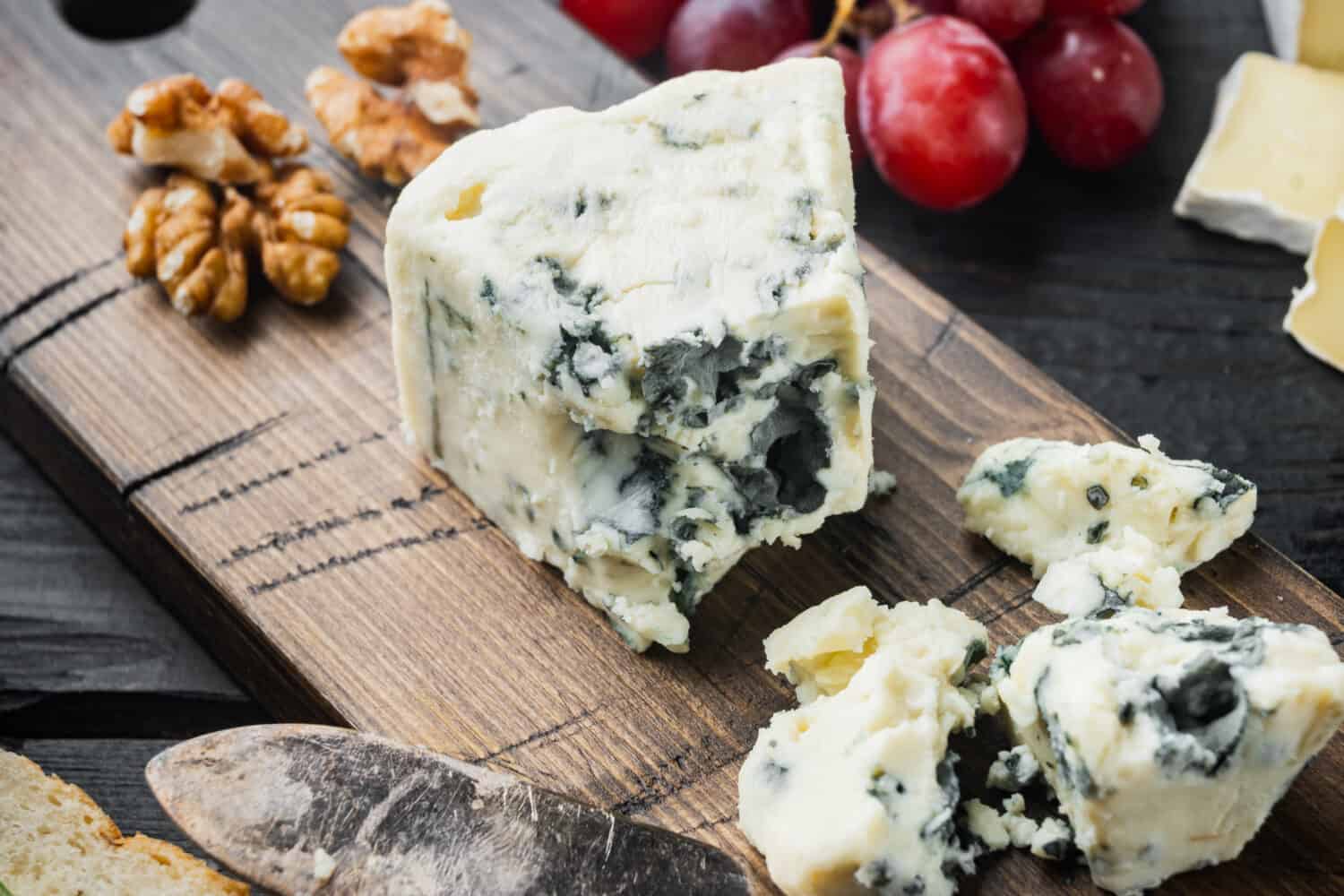Cheese is a very addictive product, irrespective of type. The wide range of cheeses offers different flavors like sweet, slightly acidic, and other complex and strong ones like blue or Roquefort cheese. The last two seem similar, but their characteristics help differentiate them. Roquefort is a variant of blue cheese that's moist and holds well, while blue cheese is an umbrella term for cheeses. Blue cheese is semi-soft and crumbly. This article explains more about Roquefort vs. blue cheese to help you understand and differentiate them.
- The must-have convenient reference guide for every home cook!
- Includes more than 8,000 substitutions for ingredients, cookware, and techniques.
- Save time and money on by avoiding trips to grab that "missing" ingredient you don't really need.
Roquefort vs. Blue Cheese: What are Their Differences?
Roquefort is a familiar term that most people think it's a unique name for all blue cheeses. This isn't the case because blue cheese includes several kinds of cheese with different histories, origins, and ingredients. The two can be confusing, but here are their key differences.
As mentioned earlier, Roquefort is a type of blue cheese, while blue cheese is a broad category of cheeses like Roquefort, Gorgonzola, and Stilton. As the name suggests, blue cheese has blue, bluish, or blue-green spots with veins stretching through its white skin. Since it's creamy, it appears like porcelain with natural green themes on a white background. It lacks the rind, an outside layer that forms when cheese ages and gives some cheese their complex flavor.
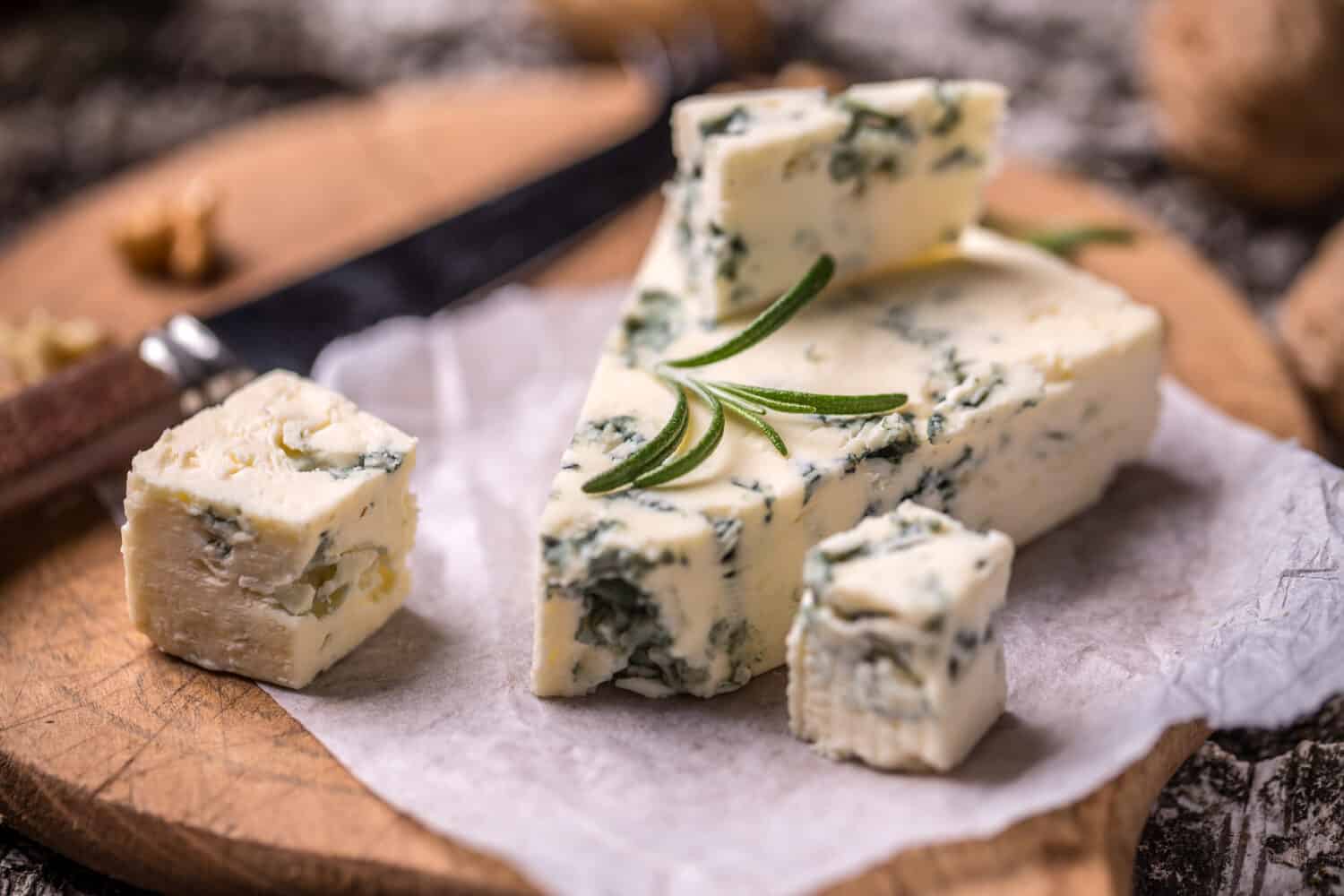
©grafvision/Shutterstock.com
On the other hand, Roquefort isn't much different, considering it's a close variant. It has comparable blue cheese traits. It also has blue mold spots on its skin and marble-looking veins running through it and lacks the rind.
Despite the almost similar look, their textures set them apart. Roquefort is quite moist and holds together better than blue cheese. However, it's also easy to break down when necessary. It is spreadable, perfect for salad dressings, pies and tarts, topping, filling, pasta, and as an accompaniment for red wine with apples and walnuts. Blue cheese is semi-soft, dry, and crumbly but also creamy. You can use it as a salad dressing, sauce, or dip, pair it with fruits and nuts, or on pizzas, burgers, and sandwiches.
Blue cheese isn't everyone's go-to choice when it comes to taste. Though the flavor changes depending on the type, these cheeses generally have a bold, sharp, tangy flavor. The taste can go from sour to salty or mild to sharp based on type. The smell is also pretty strong, with a distinct odor; it's hard to miss. The range is due to the kind of milk used, the retained whey volume, the mold used, and the environment. Roquefort has an intense and robust taste. It has a complex, tangy, sharp flavor, especially in blue veins. Some users also describe it as salty, alongside its strong and aromatic smell.
What is Roquefort Cheese?
It s a classic blue cheese created from ewe's milk. It originates in France in Roquefort-sur-Soulzon, where many considered it as “cheese of kings and popes”. It's one of the oldest cheeses worldwide, but companies have imitated it and used its name indiscriminately on salad dressings and processed cheese. The good thing is Roquefort cheese has a protected EU designation of origin. It means the only cheese made from the Lacaune sheep in Roquefort-sur-Soulzon is the true Roquefort.
The Lacaune sheep milk people use is usually fresh and unpasteurized to achieve the final product. Penicillium mold, known as Penicillium roqueforti, also comes in handy to create blue veins. It's grown in specific caves in France with ideal temperatures and humidity.
What is Blue Cheese?
Blue cheese is a broad class involving cheeses with blue spots or veins on their white skin. Blue or bleu cheese is a semi-soft cheese with a sharp, salty taste. It can also be dry and crumbly: either way, perfect for use as a spread or melted over various foods. Blue cheese owes its appearance to the cultures of Penicillin mold. The mold contributes to its spots which are usually blue or green. During production, manufacturers use cow, sheep, or goat milk and the edible Penicillin mold to form blue cheese.
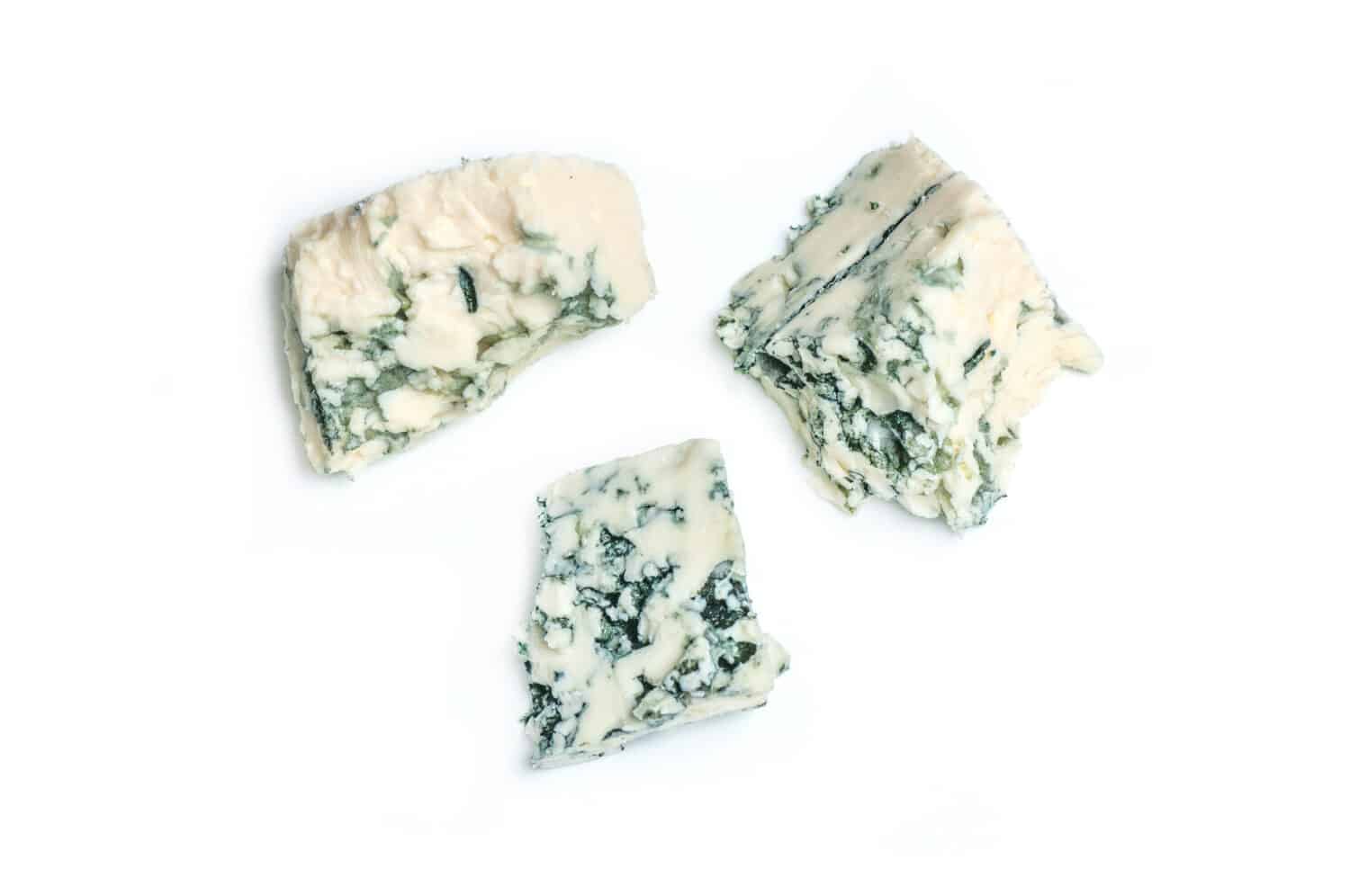
©Maksym Yasinskyy/Shutterstock.com
France was the first country to create blue cheese. The story behind the cheese's discovery is pretty unique. It came to be when a cheesemaker forgot a piece of cheese he was eating in the cave. Once he remembered and turned back, he found the cheese covered with mold and turned blue. Blue cheese is cultured commercially in various parts of the world and comes in different varieties based on the ingredients used. The smell, taste, texture, and flavor differ for similar reasons.
Health Benefits of Roquefort & Blue Cheese – What’s Good for You?
Roquefort and blue cheese are both popular types of cheeses that are known for their delicious flavors and health benefits. Both of them contain healthy fats, which can help to keep your cholesterol levels in check and promote heart health. While both types of cheese have probiotic benefits, Roquefort is unique in that it contains a type of beneficial bacteria that is not found in other cheeses. Additionally, each type of cheese contains its own set of minerals such as calcium, zinc, phosphorus, and selenium that can provide a range of important vitamins and nutrients to your diet.
As much as Roquefort is part of the blue cheese family, its nutritional value varies slightly from blue cheese. Generally, blue cheese has fewer calories than Roquefort. The latter has 369 calories per 100g, while the other has 353 calories per 100g. Most Roquefort and blue cheese calories come from fat, 30.64g, and 28.74g, respectively. The amount of protein in blue cheese is lesser than its counterpart; however, it has more carbohydrates.
- The must-have convenient reference guide for every home cook!
- Includes more than 8,000 substitutions for ingredients, cookware, and techniques.
- Save time and money on by avoiding trips to grab that "missing" ingredient you don't really need.
How to Make Blue Cheese
The production process of blue cheeses is quite different from other cheeses. Below are the steps for making blue cheese.
- Pasteurize and solidify raw milk using a starter culture. The milk can be goat, cow, or sheep's, and the culture is Penicillium roqueforti.
- Start the coagulation process by adding the rennet enzyme
- Slice the coagulated curds to expose the whey, then drain the whey to create individual blocks.
- Scatter the penicillin mold onto the cheese curds, then poke them with steel rods to enhance oxygen circulation, leading to mold growth.
- Sprinkle salt to avoid spoilage.
- Leave the cheese to age for about 60-90 days.
How to Make Roquefort Cheese
The making process is almost similar to that of blue cheese but with slight differences. Roquefort cheese uses ewe's milk, unlike blue cheese, which has several options. So,
- Add the Rennet enzyme to the ewe's milk within 48 milking hours.
- In a large vat, heat the milk to ferment it into curds.
- Carefully cut the curds into small pieces to release the whey.
- Drain the whey from the curds and add salt to them.
- Store the vat with the cheese away from light for a few days before going into a cave for aging.
- Insert metal rods into the cheese for spore growth.
- Put the cheese in a cave to age for 3-5 months or a maximum of 10 months.
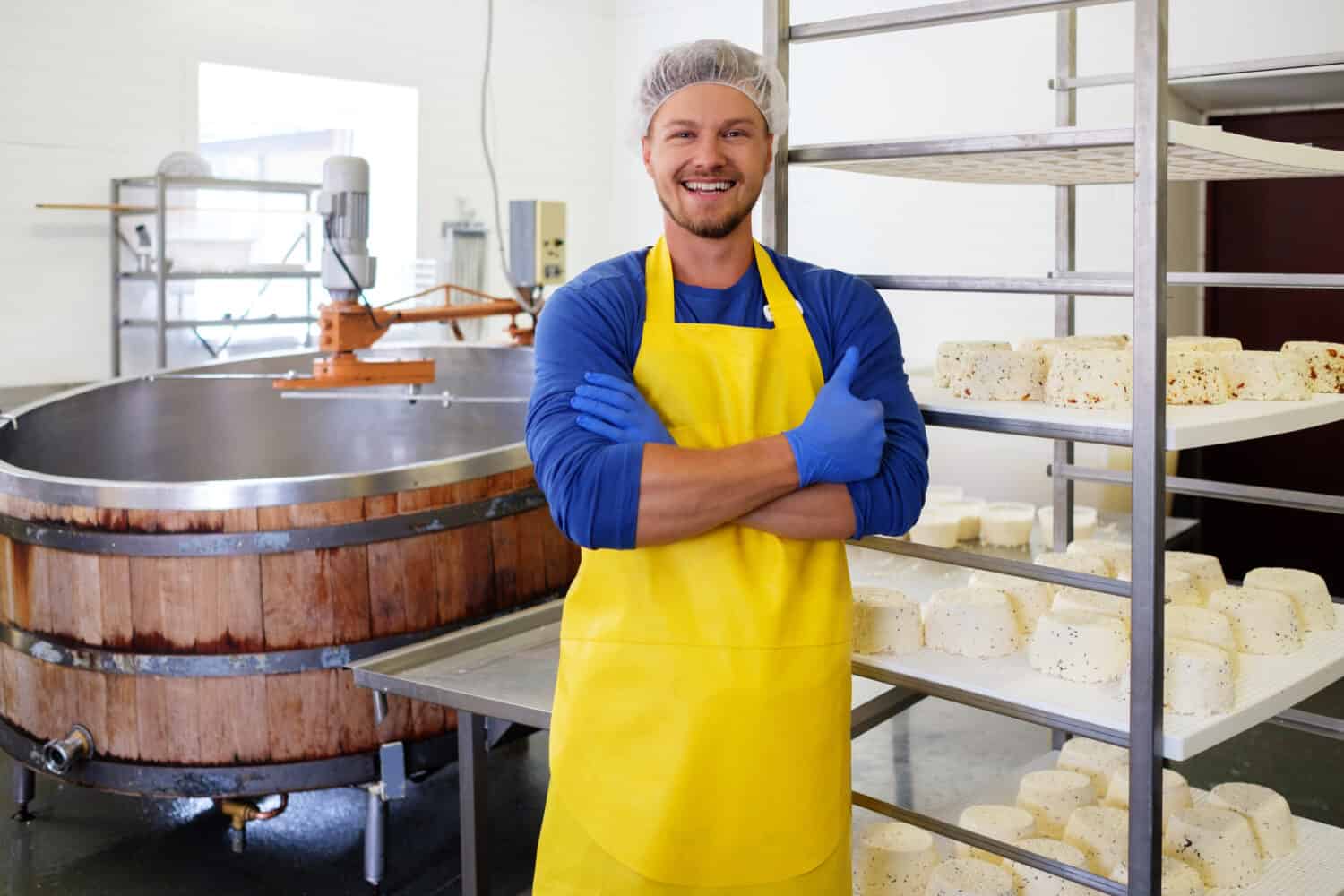
©Nejron Photo/Shutterstock.com
Best Substitutes for Roquefort Cheese
Here are some main options that can act as substitutes for Roquefort cheese.
Gorgonzola Cheese
It's a type of blue cheese with a strong tangy flavor. It's excellent for salads, pizzas, pasta dishes, spreads, and dipping sauces.
Bleu d'Auvergne
It's a French blue cheese made from cow milk. It has a strong salty flavor and has an edible rind from the aging period. It works in many recipes like salads, gratins, pasta dishes, etc.
Best Substitutes for Blue Cheese
There are many variations of blue cheese, and it is easy to interchange one for the other as long as the taste, flavor, and texture match. These substitutes are ideal when you have blue cheese, but most lack the salty taste and intense aroma, which is excellent for most people.
In the case where you are out for blue cheese for a certain dish, or you'd like to experiment with a substitute, here are some suggestions to try:
Feta Cheese
It is slightly saltier than blue cheese and has a tangy flavor but works well. It's made from cows, sheep, or goat milk, just like blue cheese, and is excellent for cheese boards, salads, dressings, and pasta dishes.
Queso Fresco
It's one of the mild cheeses but with a salty taste. The taste may be a put-off for others, so be mindful when preparing it. Queso fresco is crumbly with a texture similar to blue cheese. It's a great addition to salads and spread for sandwiches.
- The must-have convenient reference guide for every home cook!
- Includes more than 8,000 substitutions for ingredients, cookware, and techniques.
- Save time and money on by avoiding trips to grab that "missing" ingredient you don't really need.
Goat Cheese
It has a milder taste than feta, suitable for dips and dressings. The mild flavor makes it one of the most preferred substitutes.
Aged Cheddar
Though its flavor slightly differs from blue cheese, it is an excellent replacement if you don't mind the change. You can use it on salads, steaks, and burgers
Conclusion
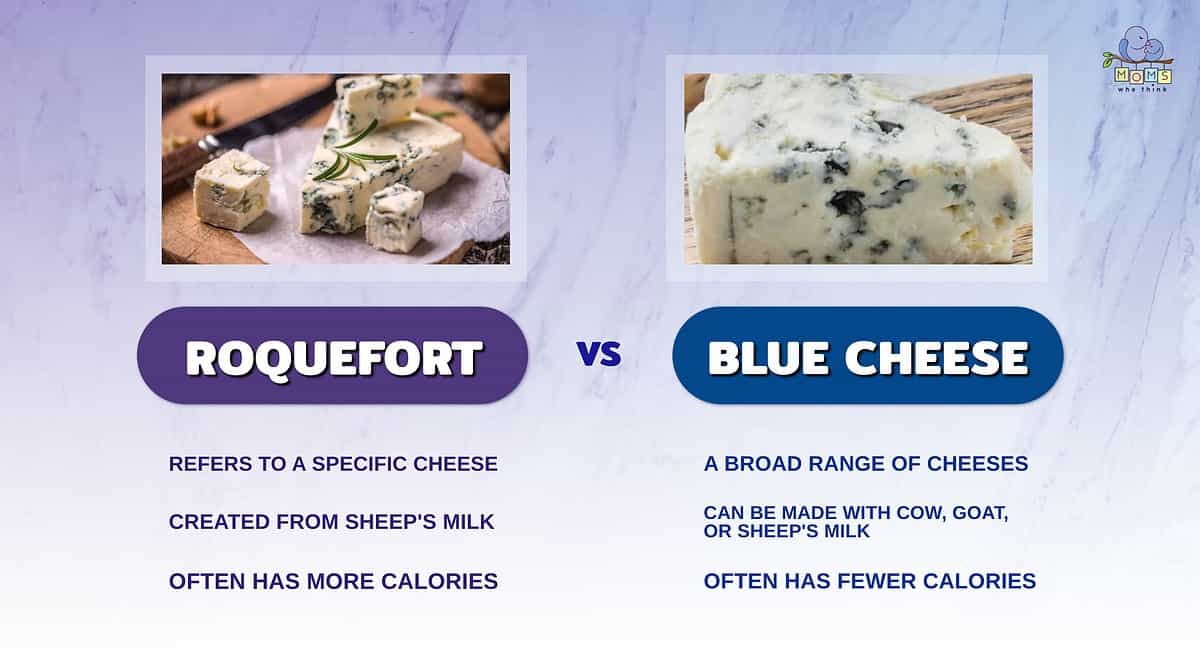
- Roquefort is a specific type of cheese, while “blue cheese” can refer to any one of a number of cheeses in the same family.
- Blue cheese can be made from cow, goat, or sheep's milk, while Roquefort needs to be made with sheep's milk.
- Roquefort often has more calories than blue cheese, but this depends on the type of blue cheese being considered.
Roquefort and blue cheese look similar but still differ in various ways. Their flavors, textures, and nutritional value vary. Blue cheese consists of multiple kinds of cheese, one being Roquefort. They are available worldwide in different forms. Roquefort cheese is famous in France and is one of the best there is.
If you want to try a delicious recipe that uses blue cheese, check out these buffalo blue cheese wontons:
PrintBuffalo Blue Cheese Wontons
Ingredients
- 12 square Wonton wrappers
- 4 oz. cream cheese, softened
- 1/4 cup blue cheese crumbles
- 2 Tbsp. Buffalo sauce
- 1–2 green onion, chopped
- Oil for frying
Instructions
- Mix cream cheese, blue cheese, buffalo sauce, and green onion in small mixing bowl.
- Drop spoonfuls into wonton wrappers. Seal edges of wontons with water (instructions are usually on the package).
- Heat oil in deep frying pan on medium heat.
- When hot enough, fry wontons until golden brown on each side.
- Drain on paper towels. Serve with blue cheese dressing and more buffalo sauce, if desired.
The image featured at the top of this post is ©Chatham172/Shutterstock.com.
